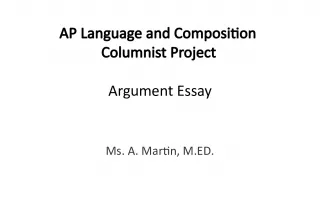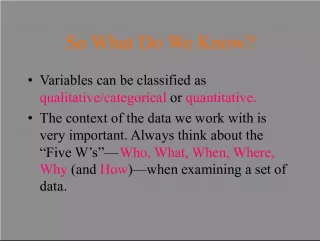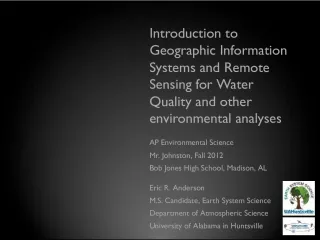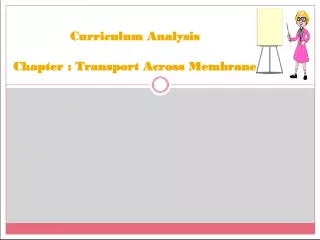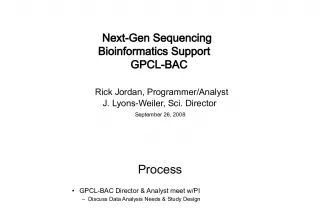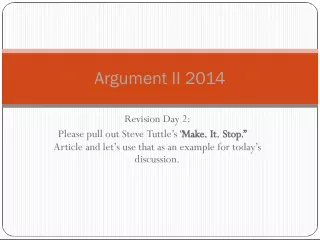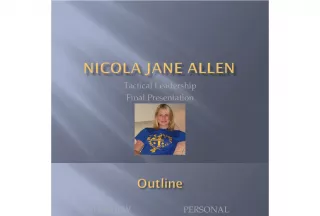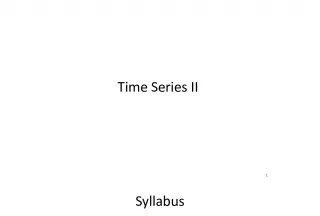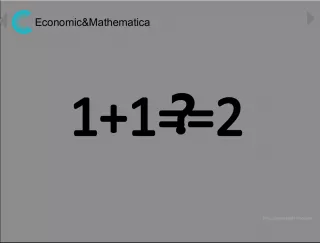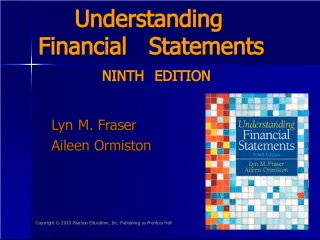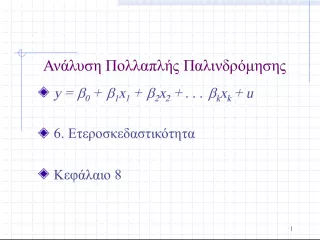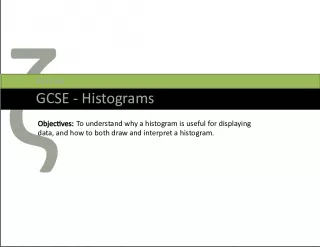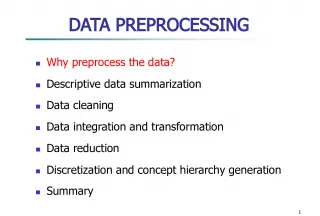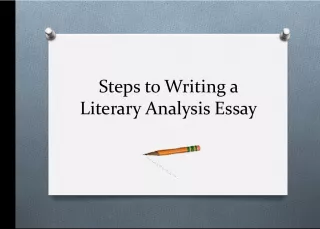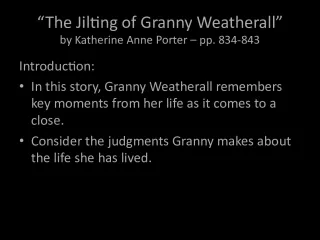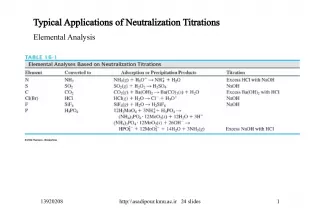Understanding Rhetorical Analysis


Analyzing a text to understand its purpose and persuasive techniques can help improve critical and meta-cognitive thinking in writing. Steps include identifying the intended audience, purpose, genre features, and rhetorical strategies used.
- Uploaded on | 1 Views
-
 tord
tord
About Understanding Rhetorical Analysis
PowerPoint presentation about 'Understanding Rhetorical Analysis'. This presentation describes the topic on Analyzing a text to understand its purpose and persuasive techniques can help improve critical and meta-cognitive thinking in writing. Steps include identifying the intended audience, purpose, genre features, and rhetorical strategies used.. The key topics included in this slideshow are . Download this presentation absolutely free.
Presentation Transcript
2. What and Why? Rhetorical analysis is taking apart the pieces of a text to see how it works. It is useful because it gives you language/words to talk about how writing works. It can help you think critically and metacognitively about your own writing. It can be universally applied across similar modes/media We’ll talk later about some differences as outlined by Bogost.
3. Steps Describe the item Who is the intended audience? What is the primary purpose of the piece? Who is the writer/producer of the piece? What are some genre features used in this piece? How are rhetorical features used to persuade the audience and achieve its purpose? Logos? Ethos? Pathos? Kairos?
4. Let’s begin with Audience In a given rhetorical situation, there are three audiences: intended, actual, and invoked. Ideally, they overlap, but once a work leaves a writer/producer, it can be read and interpreted in a number of different ways Ian Bogost refers to this when he mentions the poststructuralist decoupling of authorship from readership (20)—in other words, despite what the author of a piece intendeds, readers can interpret and process a piece any way they see fit.
5. Intended, Actual, Invoked Intended audience – this is who the primary author had in mind would be reading the piece. Certain assumptions about values and ideology are made. It’s a reader of the Wall Street Journal who is middle-upper to upper class, lives in New York, and is a fiscal conservative. Actual audience – this is who is actually reading a piece. It’s the farmer in Iowa who is reading a copy of the Wall Street Journal while waiting for his breakfast order at a local café. Invoked audience – this is an audience specifically named (e.g. “you”). It attempts to connect with a specific audience at the risk of alienating actual and a more inclusive intended audience. It’s the writer who begins a Wall Street Journal article, “You may be interested in the new crop of hybrid automobiles coming out of Detroit.” The farmer doesn’t really care unless it is a hybrid tractor, and the New Yorker as intended audience probably doesn’t drive, and only cares insomuch as it might be an investment opportunity.
7. Your turn Working with one other person, look through the magazine you have. Who is the intended audience? What do you think this audience values? What are some of this audience’s assumptions? If you aren’t its intended audience, what sorts of things do you object to? What is the primary purpose of this magazine? How can you tell? How is the magazine publisher/writer portraying themselves? What sorts of credibility/authority do they offer?
8. Moving forward Now that you have looked a general rhetorical triangle, let’s look at a specific advertisement for a game and write a rhetorical analysis of it. We are going to use Mercenaries 2 commercial. Rhetorical Analysis is analyzing a text looking for how it accomplishes its intended goal. The criteria for analysis are the rhetorical features of the piece. Begin with describing the piece, then tell your audience whether it is effective rhetorically using the rhetorical features. Be specific in describing the rhetorically effective features. Give examples from the piece to illustrate the rhetorically effective writing strategies you are describing.
9. Steps 1. Describe the item. Provide an overview of what it is as if your audience has never seen it before. 2. Who is the intended audience? How do you know? Be as specific as possible in describing the audience. Include as many details as you can in this description. Narrow the audience down as much as possible. 3. You are the actual audience. Do your values align or are they different than the intended audience? If you are not its intended audience, is it still an effective advertisement to you? 4. What is the primary purpose of the piece? What was it trying to persuade the audience of? Is it praising, blaming, attacking, defending, or proposing? What are the other purposes? Be specific and clear in describing the purposes. 5. Who is the writer/producer of the piece? What persona do they portray? How do they portray that persona? 6. What are some genre features used in this piece? Why were these particular genre features effective in reaching the audience and achieving the piece’s purpose? 7. How are the following rhetorical features used to persuade the audience and achieve its purpose: Logos – Facts or data and rational or logical appeals. This is difficult to detect in visuals. Some have argued that framing and association are forms of logical argument in visuals. Words still offer the clearest sign of logos. Pathos – Depictions and associations of emotion to instill emotion. Sometimes these are transparent as in a sad song meant to make you sad. Ethos – character or ethical appeals. Authority and credibility of the author is portrayed.
10. Works Cited Works Cited Bogost, Ian. Persuasive Games: The Expressive Power of Videogames . Boston: MIT, 2008. Print. Mercenaries 2 commercial oh no you didn't . 27 August 2008. YouTube . Web. 6 January 2010.
